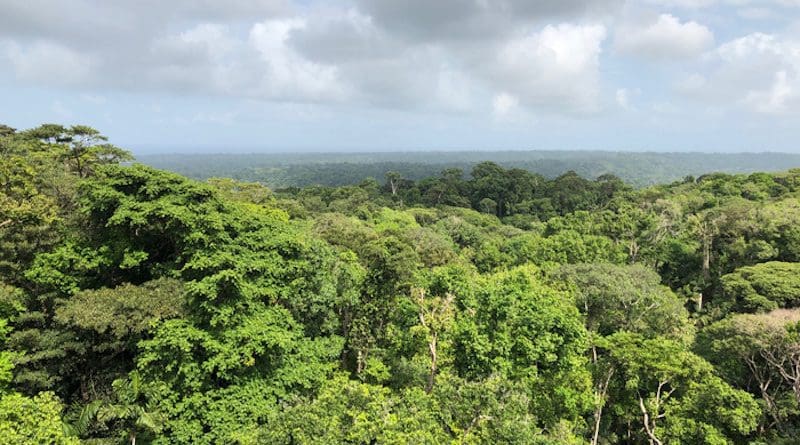Indigenous Territories Fight Climate Change
In a recent study in PLOS ONE, researchers from 6 different countries, including Camilo Alejo and Catherine Potvin of the Department of Biology at McGill University, examined the importance of Indigenous Territories in climate change mitigation across Panama and the Amazon Basin. They found that Indigenous Territories represent effective natural solutions to meet the Paris Agreement by protecting forests and storing carbon. Given the role they play, the researchers say that Indigenous peoples should benefit from payments countries receive for avoided greenhouse emissions.
Q&A with Camilo Alejo
What question did you set out to answer?
Natural environments like forests absorb carbon dioxide from the atmosphere and store that carbon in the forest ecosystem, mainly in living biomass and soil. The world’s forests store approximately 861 gigatons of carbon. Carbon stocks refer to the amount of carbon stored in this way. Protecting and managing forests are cost-efficient ways to mitigate climate change by increasing carbon stocks and reducing land-use emissions from activities such as forestry or agriculture. Indigenous Territories, customary lands of traditional societies who inhabited countries before colonization, and Protected Areas, whose main objective is the conservation of nature, might be considered part of these natural climate solutions. Our study aimed to estimate the actual effect of Indigenous Territories and Protected Areas on forest’s carbon stocks while considering the influence of their location across Panama and the Amazon basin portions of Colombia, Ecuador, Peru, and Brazil.
What did you find?
We found that Indigenous Territories are as effective as Protected Areas in preserving forest’s carbon stocks. For example, Indigenous Territories and Protected Areas in Brazil had around 6% more carbon stocks than private and unprotected lands in 2003. This effect increased to 10% and 8.5% in 2016, respectively. Both buffer losses and bring stability to forest’s carbon stocks. We also found that Indigenous Territories’ boundaries secure more extensive carbon stocks than their surroundings, and this difference tends to increase towards the least accessible or more remote areas. For instance, Panama’s Indigenous Territories had carbon stocks 9% larger than their surroundings at 1km from their boundaries, and this amount doubled at 15 km.
Why are the results important?
Our findings show that both Indigenous Territories and Protected Areas are effective ways to protect forests, store carbon, and avoid land-use emissions from deforestation and degradation. Moreover, our findings are among the first to establish that indigenous land use in neotropical forests may have a stable impact on carbon stocks, indicating that indigenous forest governance complements centralized forest governance in Protected Areas. Forest governance is defined as the way in which public and private actors, make and enforce binding decisions about the management, use and conservation of forest resources. Hence, Indigenous Territories in Panama and the Amazon basin, while providing material and cultural benefits to their inhabitants, can have a pivotal role in climate change mitigation.
Who or what will be affected by what you found?
Under the Paris agreement, countries may rely on forest conservation, restoration, and improved management for avoided greenhouse gas emissions. Our results indicate that Indigenous Territories support Nationally Determined Contributions (NDCs) under the Paris Agreement. NDCs embody efforts by each country to reduce national emissions and adapt to the impacts of climate change. We suggest that securing land titles to Indigenous Territories and formalizing forest co-governance when Indigenous Territories overlap with Protected Areas could bring multiple benefits. On the one hand, indigenous people may secure their livelihoods and culture. On the other hand, national governments could reach their climate goals. Finally, given the role of Indigenous Territories in climate change mitigation, we highlight that countries receiving payments for avoided greenhouse emissions must consider indigenous people recipients of such benefits. Indigenous peoples must become recipients of countries’ results-based payments.

